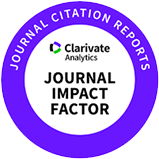Non-destructive Evaluation of Microbial Quality of Beef (M. Longissimus Thoracis Muscle) using Visible/NIR Hyperspectral Imaging and Machine Learning Methods
Abstract
Machine learning models were developed to predict the degree of microbial quality of beef by a non-destructive method using a near-infrared hyperspectral imaging system. Beef was stored under aerobic conditions at different temperature scenarios (refrigerated, thawed after freezing, or left at room temperature) for a period of 15 days to induce freshness change and microbial growth. Hyperspectral data cubes were obtained from a data acquisition system in a darkroom environment. The total aerobic bacteria (TAB) experiment was performed in the established meat science manner to provide reference values for the microbial contamination level of the sample. The region of interest designated as the red meat region was selected for spectral extraction. Regression models were developed to predict the TAB value from the extracted data. Partial least squares regression (PLSR), support vector machine (SVM), artificial neural network (ANN), and one-dimensional convolutional neural network (1D-CNN) methods were employed to construct TAB prediction models. Chemical maps were also created for each developed model to visualize the performance of the model. The model development process concluded with the iteration of all previous steps at completely different times and with different beef samples, generating the data for verification and applying it to the developed model to evaluate its versatility. As a result of the development, it was confirmed that the microbial quality of beef can be predicted by models generated from hyperspectral data (Best validation R<sup>2</sup> = 0.8593, RMSE = 0.6947). Accurate quality prediction helps livestock breeders develop and apply better husbandry practices, which ultimately leads to higher quality beef production.
















